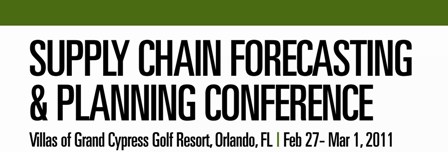Back in the spring of 2010, business forecasters were filled with trepidation about whether or not an economic recovery was either reasonable or imminent. At Loud Technologies Inc our planning staff wanted to forecast a conservative level of market recovery but didn’t want to commit too much working capital into material spending. Little did we know that our top selling model was about to experience an amazing and unprecedented 309% growth. The huge spike in demand was not a result of a pricing change, a pre-planned promotion, or a result of a currency exchange rate variance. This spike was not visible in any of the supplied territory or key account sales forecasts and was not the result of an addition to our vast new territory or customer base. This top selling model had been on the market for 10 years demonstrating its exemplary staying power beyond the average product’s life span of four years. It’s not like the product was just catching on or being launched. This instance marked one of several events that drove us to investigate the contributors to volatility in our business, and it drove us to explore measures of both sensing and controlling demand spikes without preventing sales growth.
Customer demand is what it is after all, “the customer is always right”. We were operating under the premise that customer demand is an untamable beast and in doing so we allowed ourselves to be victims of our own business processes. To be fair, our business had come through some manufacturing challenges that were so severe, some believed we would not survive. Volatility in demand was exacerbated by extended inventory outages from material sourcing complications and factory production problems, much of which were common amongst the broad spectrum of electronics manufacturing businesses in 2010.
So we put our heads together and worked diligently to build what has become an incredibly resilient business with more profitability than ever before. Nearly a year later, our staff has deployed a variety of enhanced ‘demand sensing’ tools, that have allowed us to develop a variety of internal processes improvements and external measures that stabilize demand patterns. Our own behaviors proved to be contributors to volatility in ways that we never expected. We had conditioned our customer base to buy spontaneously. In several areas of the business, we were contributing to or allowing demand volatility when we didn’t have to. Instead of blaming others we took the responsible path and owned up to our respective business choices, one employee at a time.
Today our business is stronger, leaner and much more refined than ever.. These lessons are hard to learn and I have found that there are a few that I could glean from text books and academia. In reading through a popular complete Body of Knowledge about demand volatility I did not find any practical measures or control systems for managing excessive volatility. Nothing can wreak havoc across a supply chain like a sudden massive demand variance that is carried through to the production floor. The more research I did on the topic, the more I realized that there was very little discourse to be found on the practical measures that a business can incorporate to manage through periods of excessive volatility. For this reason I chose to speak on the topic and share our experiences at IBF’s upcoming Supply Chain Forecasting & Planning Conference in Orlando on February 27th through March 1st. Hopefully we can learn from each other’s experiences, so your feedback and experiences are welcome.
Christopher Mael
DIRECTOR OF PLANNING & ANALYSIS
LOUD TECHNOLOGIES INC.
Hear Christopher Speak at




